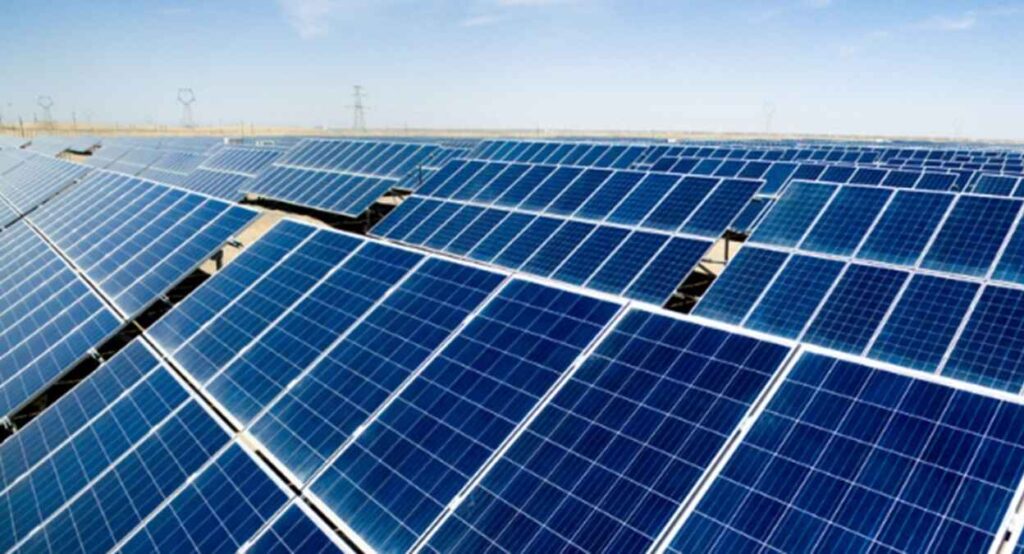KOLKATA / TAMIL NADU – In a massive boost to India’s solar manufacturing landscape Vikram Solar has announced it is on track to commission 11 GW of new module manufacturing capacity in Tamil Nadu by the end of the 2025-26 fiscal year. This rapid expansion will catapult the company’s total installed module manufacturing capacity to 15.5 GW solidifying its position as a leading domestic producer.
The expansion is split between two key locations in Tamil Nadu—Vallam and Gangaikondan—and is backed by strong financial results and a clear strategy for backward integration.
A Two-Pronged, Record-Breaking Expansion
The company is executing its growth plan with remarkable speed:
- Vallam Facility (5 GW): Touted as the single largest expansion in the company’s history the 5 GW facility is being built in a record time of just six months. It consists of four production lines of 1.25 GW each. The first two lines (2.5 GW) are set to begin operations in November 2024 with the remaining two lines following in December. This will increase Vikram’s capacity from 4.5 GW to 9.5 GW.
- Gangaikondan Facility (6 GW Modules & 12 GW Cells): On a 186-acre plot Vikram Solar is developing a larger, integrated complex. The 6 GW module facility is planned for commissioning in the fourth quarter (Q4) of FY26. Alongside it, a major 12 GW solar cell manufacturing facility will be built in two phases, with completion targeted by the end of FY27.
Achieving Self-Reliance Through Backward Integration
A key strategic goal of this expansion is to reduce dependency on imported components. The 12 GW cell plant is critical for this.
Ranjan Jindal, Chief Financial Officer of Vikram Solar, stated, “By the end of next fiscal (FY27), we will have our own cell manufacturing facility, which will ensure about 75 per cent backward integration to the overall module plan.” This move will give the company greater control over its supply chain, costs, and product quality.
Strong Financial Performance Fuels Growth
This aggressive capital expenditure is supported by robust financial health. The company reported a spectacular over 17-fold year-on-year jump in its consolidated net profit to ₹128.49 crore for the second quarter (Q2) of FY26. Its revenue from operations almost doubled, rising to ₹1,109.91 crore from ₹572.94 crore in the same period last year.
The company has a capital expenditure plan of around ₹1,000 crore for the current financial year, of which approximately ₹200 crore has already been spent.
Gyanesh Chaudhary, Chairman & Managing Director, emphasized that the company is well-positioned to lead in India’s energy transition, citing strong policy support and the rapid build-out of domestic manufacturing capacity as key growth drivers.
Frequently Asked Questions (FAQ).
1. What is Vikram Solar’s new total manufacturing capacity?
After the current expansion, Vikram Solar’s total installed module manufacturing capacity will reach 15.5 GW by the end of March 2026.
2. Where are the new plants located?
The new facilities are located in Tamil Nadu, at Vallam (5 GW modules) and Gangaikondan (6 GW modules and 12 GW cells).
3. What is “backward integration” and why is it important?
Backward integration means a company starts producing the key components it previously bought from suppliers. Vikram’s new 12 GW cell plant will supply its own module lines, reducing import reliance, controlling costs, and securing its supply chain. It will achieve about 75% backward integration.
4. How quickly is the Vallam facility being built?
The 5 GW Vallam facility is being constructed in a record time of just six months, with the first lines starting production in November 2024.
5. What is the company’s financial performance?
Vikram Solar is showing strong growth, with a 17-fold increase in net profit (to ₹128.49 crore) and a near-doubling of revenue (to ₹1,109.91 crore) in Q2 FY26 compared to the same period last year.
6. What is the total investment (capex) for this expansion?
The company has outlined a capital expenditure plan of around ₹1,000 crore for the current financial year (FY26) to fund this expansion.

